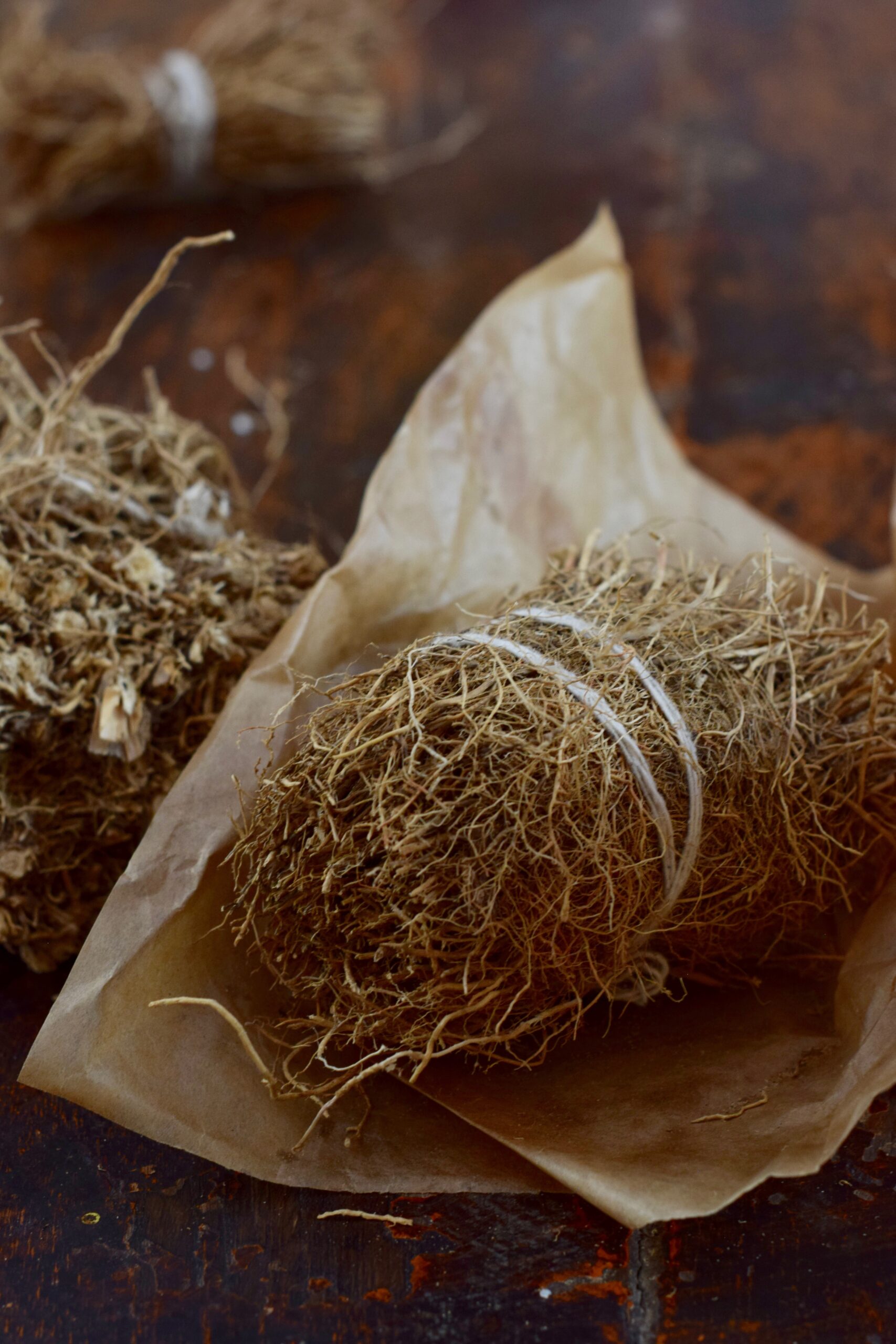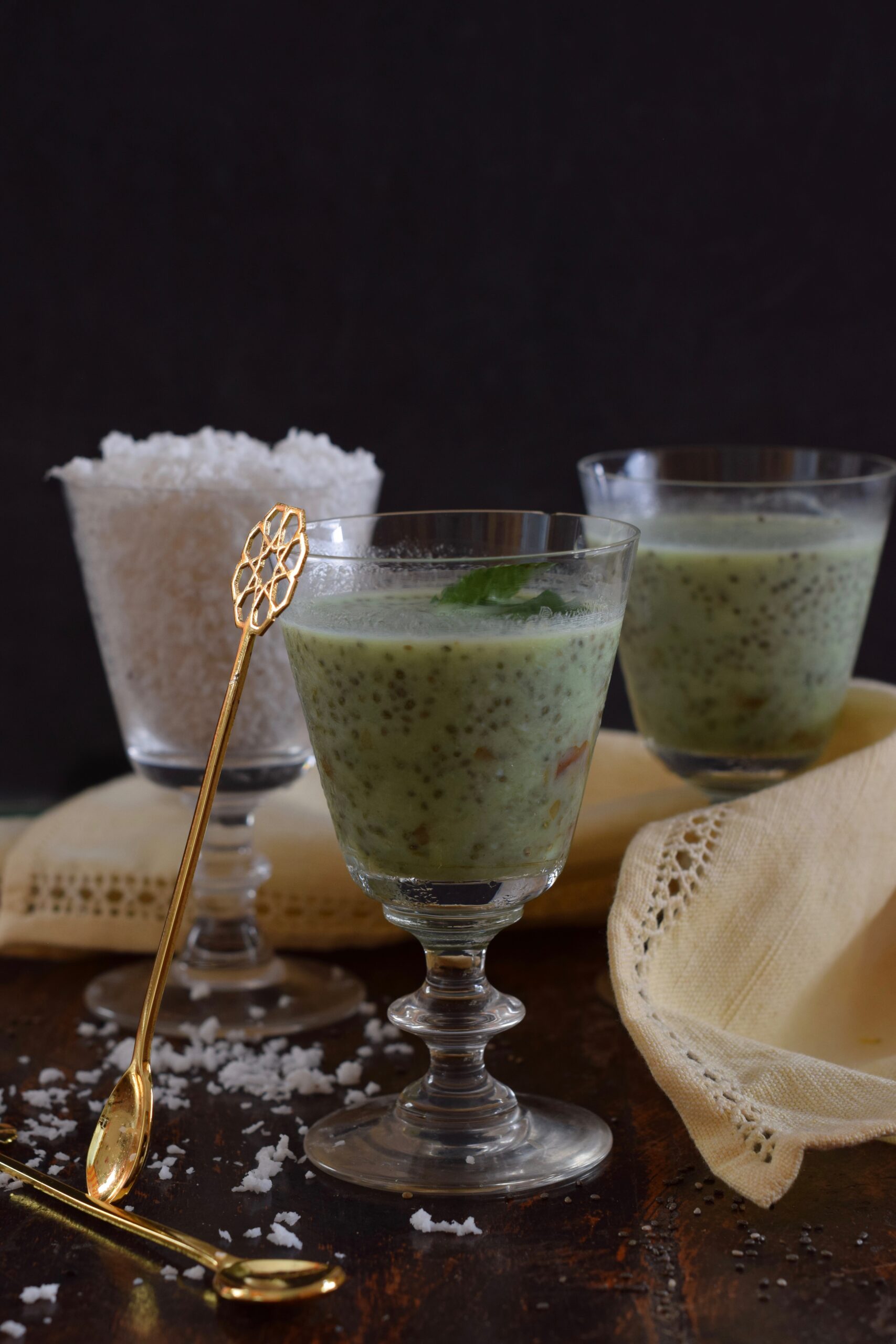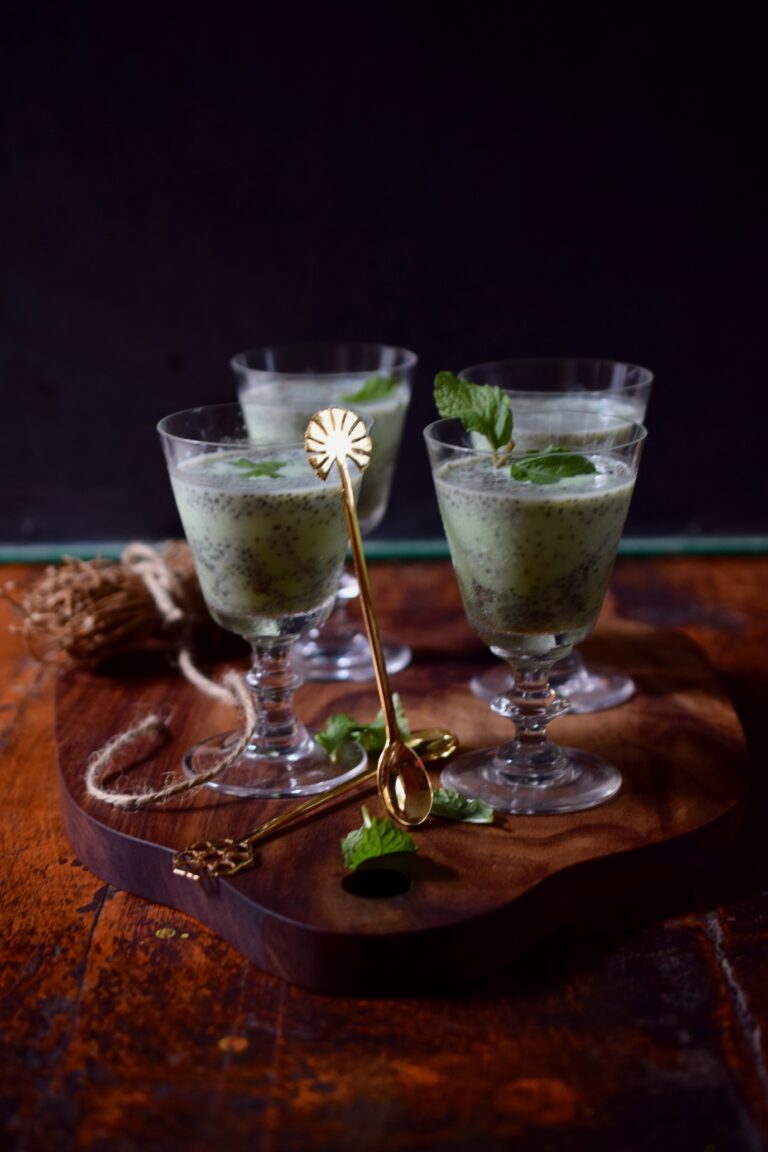The dessert du jour is the chia seed pudding – fuss-free, and usually requiring very few ingredients. If you’re like me, you’d have gotten introduced to chia seeds because of your curiosity over the current craze of having them in puddings. The first time I tasted them, they took me back to childhood visits to Bombay and the city’s famous bright-coloured, super-sweet dessert drink known as falooda. They tasted just like the takhmaria (sweet basil) seeds I loved catching between my teeth as I slurped it down… And that’s when I had an inspiration about a very Indian twist on the done-to-death chia seed pudding.
First, let’s talk about these versatile and surprisingly familiar chia seeds. Native to South America and a staple in the diets of ancient civilisations (“chia” is said to be the Mayan word for “strength”), they are now a popular superfood, known to reduce the risk of heart disease and diabetes. They have anti-inflammatory properties, are high in fibre and protein, are rich in antioxidants and nutrition, and are easy to incorporate into your diet – you can add them to smoothies and in your morning oats too, not just in desserts. Vegans and vegetarians take note: chia seeds are an excellent gelatin substitute, which is why they are used in puddings. Chia seeds also contain significant quantities of Omega-3 (notable for those who don’t consume fish or fish-based supplements) and Omega-6.
Let’s go back to the done-to-death chia pudding. Chances are, you’ve tried one of the obvious variants. But the hallmark of an exciting kitchen is innovation. Here, I’ve added a touch of that re:store magic. The special ingredient? Vetiver.

Long before the scent of vetiver became a key ingredient in the perfumes of Hermès and Tom Ford, the fragrant and cooling properties of the roots of this bunchgrass have helped people in the Indian subcontinent brave many a scorching summer. Here, vetiver is known as “khus” (not to be confused with “khus khus”, which are poppy seeds – but while we’re on that subject, do check out this cake recipe here). It is a traditional material for thatched roofs and other forms of construction because of how it helps with ventilation. I have fond memories of a room in my grandparents’ house which had curtain blinds made of khus, which were periodically dampened with water. Not only was there a pleasant aroma, but the temperature in the room was significantly reduced. Stepping into that room from the heat elsewhere in the house or compound made me feel as though I was stepping into air-conditioning. Time-honoured, old-school air-conditioning: better for the environment, too!
You may have heard of the Indian epic, the Ramayana, but here’s a little-known story from one of its variations. Some time after the great battle and coronation, Queen Sita is exiled into the forest, where she lives with her child in Sage Valmiki’s ashram. One day, she leaves the child, a boy named Lav, in the sage’s care for a short while, and the child goes missing. Unwilling to aggrieve Sita, the sage quickly creates a replica child from dry khus grass before she returns. However, the missing child too finds his way back – and a bemused Sita finds herself the mother of two. Made from khus grass, her new son is thus named Kush.
The word “vetiver” come from Tamil – “ver” literally means root – and so this species is an indigenous one to me, and I take special delight in its global popularity.
Chia-Vetiver-Coconut Pudding
(Serves 4)
8 teaspoons chia seeds
4 teaspoons finely chopped dates/figs
4 cups fresh/canned coconut milk
1 tablespoon vetiver/khus syrup
Garnishing: mint leaves and shaven coconut
As you may remember, being blessed with coconut trees in my own backyard allows me to use fresh coconut for all recipes that call for it. The traditional method of obtaining fresh coconut milk is to grate the flesh, then add water to the shavings. These are squeezed and strained. Use no more than a quarter cup of water, as you don’t want to dilute the coconut milk too much. A few shavings being retained in the milk is no issue; they enhance the flavour.
For the vetiver syrup, you can either make your own or simply purchase the same. The readymade kind contains a green colouring, whereas the homemade kind will give you a dull grey liquid. Purely for aesthetic purposes, I’ve used store-bought vetiver syrup in this recipe. Besides, the falooda of my childhood was always bright green! If you’re using real vetiver roots, you may also like to try adding them as you boil drinking water in the summer – I do this at home, and find it gives the water a pleasant taste, and further cools the body too. Try this detailed recipe for homemade khus syrup.

One of the things I love about this recipe is that depending on where you are and whichever one is easier to source, you can use either chia seeds or takhmaria/sweet basil seeds. The flavour and texture are the same, so feel free to substitute the ingredient based on availability. In the picture above, chia is on the left and takhmaria is on the right.
And now for the method itself. You’re not going to believe how simple it is, but this is all there is to it: combine the vetiver/khus syrup to the coconut milk and stir well. In four serving cups, layer the seeds and dates in equal proportions. I prefer my pudding only lightly sweetened, so I use fewer dates or figs – but feel free to enhance the sweetness your way. Remember that between the coconut milk and the dates or figs, there is plenty of natural sweetness here already, so additives like sugar are unnecessary. You can replace the figs and dates with a variety of other ingredients: another kind of fruit (like mango), vanilla or lavender are some good examples.
Now, pour the vetiver-coconut liquid into the cups, over the chia/takhmaria seeds and dates/figs. Stir gently, so that the chia seeds are mixed well and will bloom well. Allow the cups to set in the refrigerator, and serve chilled with garnishings of leaves and/or shaven coconut.
And there you have it – a four-ingredient delight that’s just as easy to make as the done-to-death variants, but livelier by far! Cooling and fragrant, the re:store Chia-Vetiver-Coconut Pudding is vegan, sweet, summer-friendly… and very satisfying.




